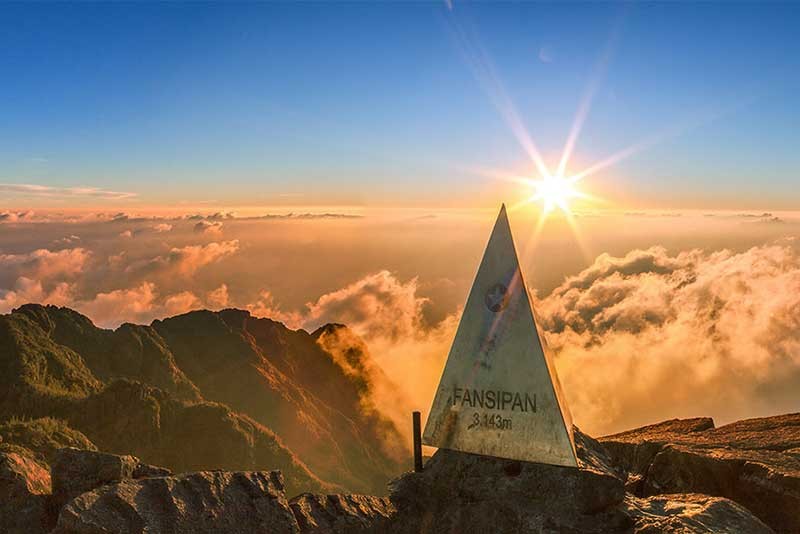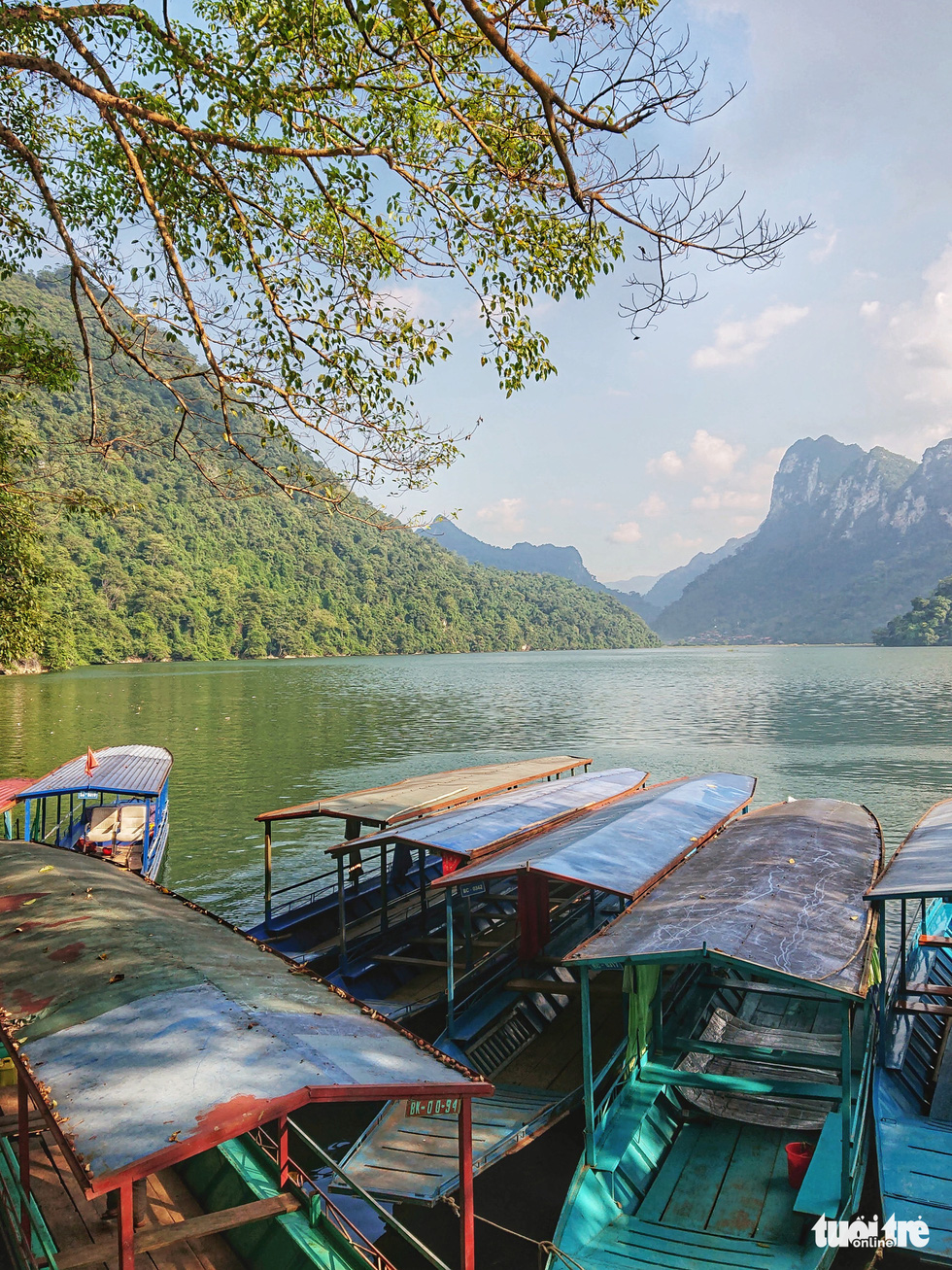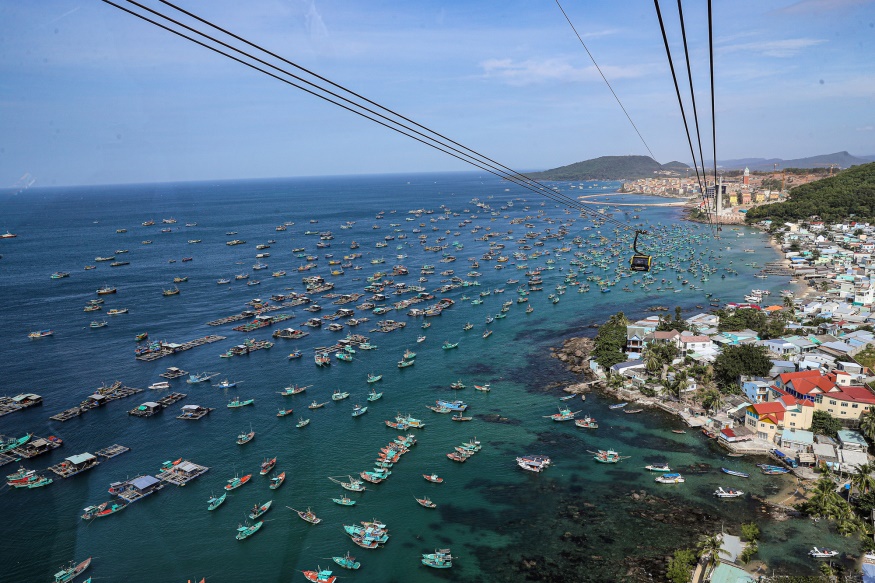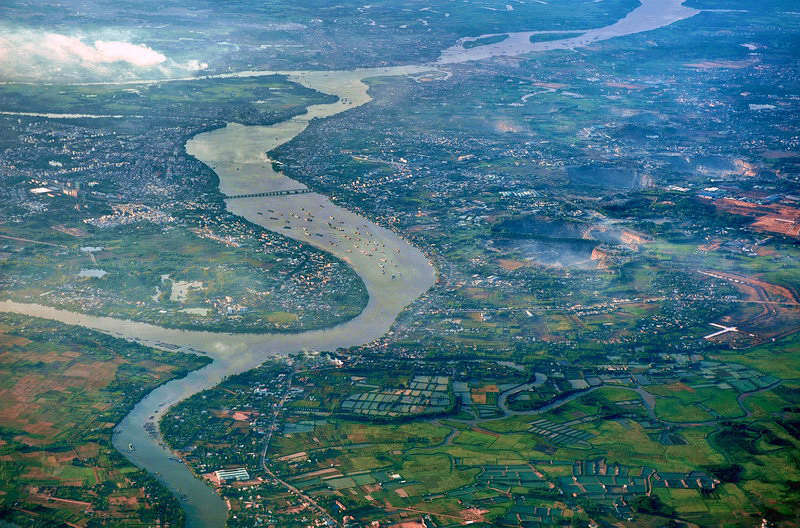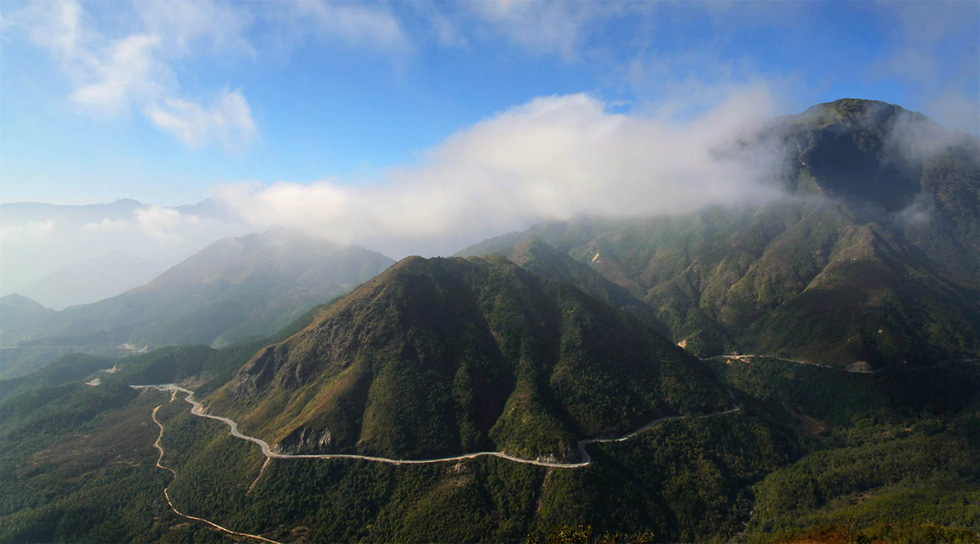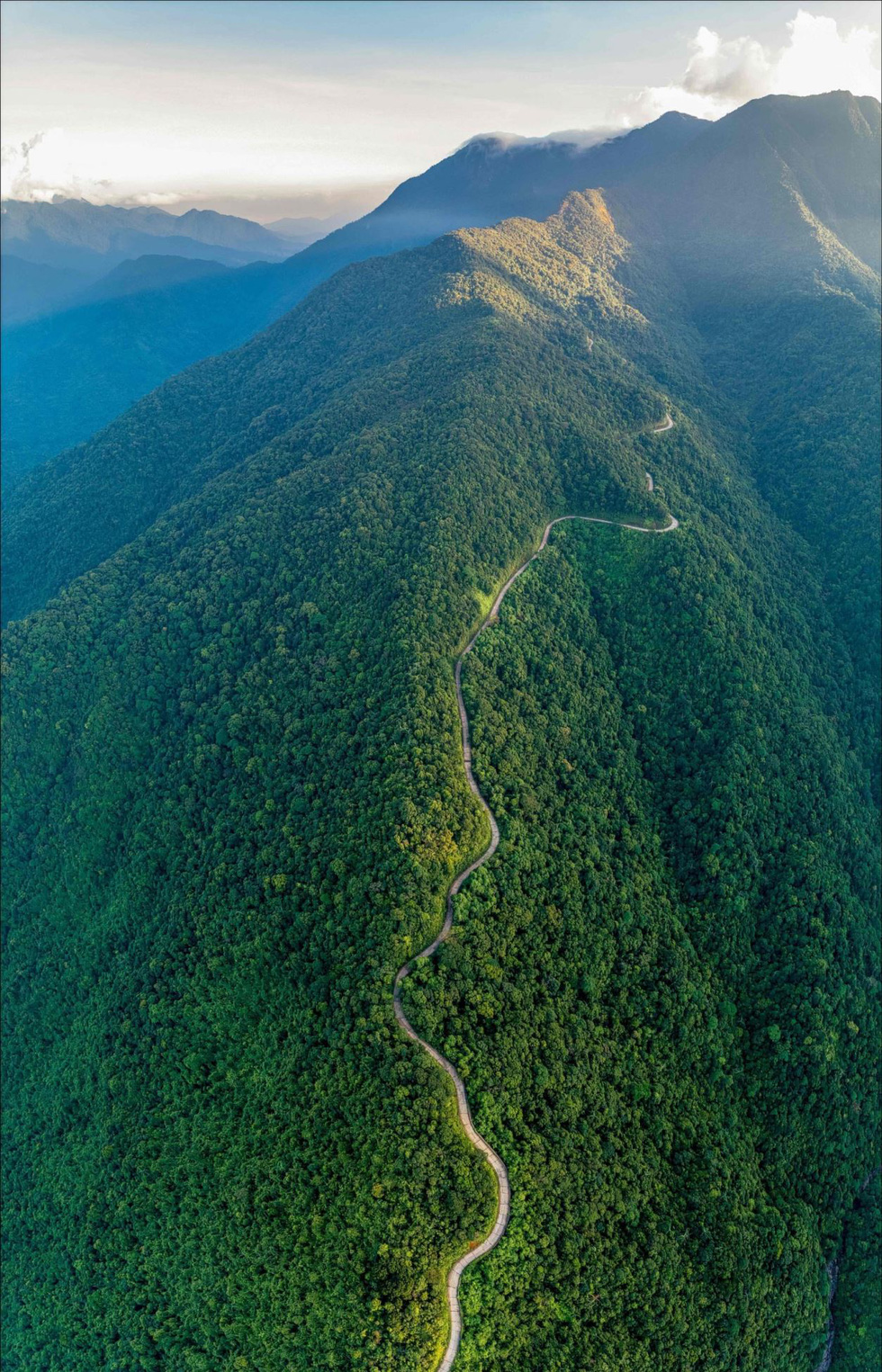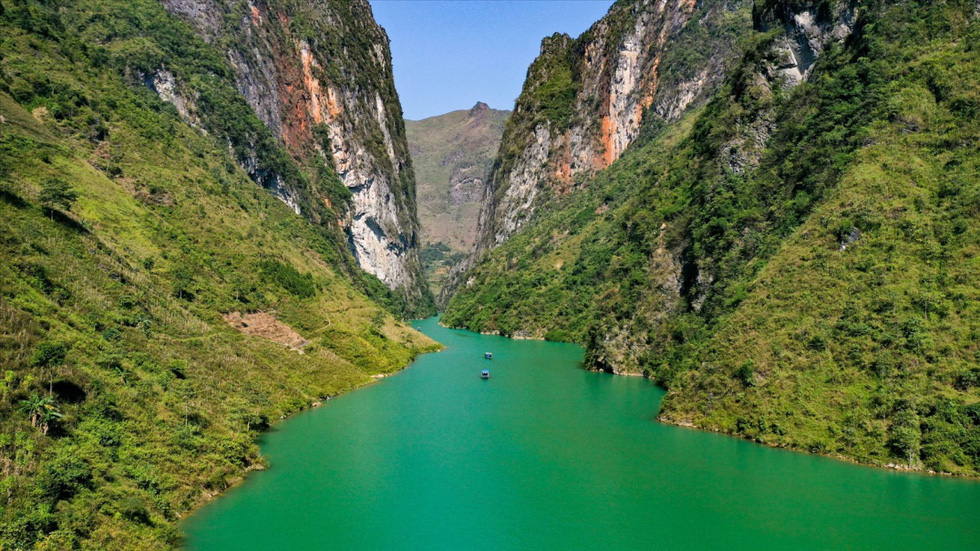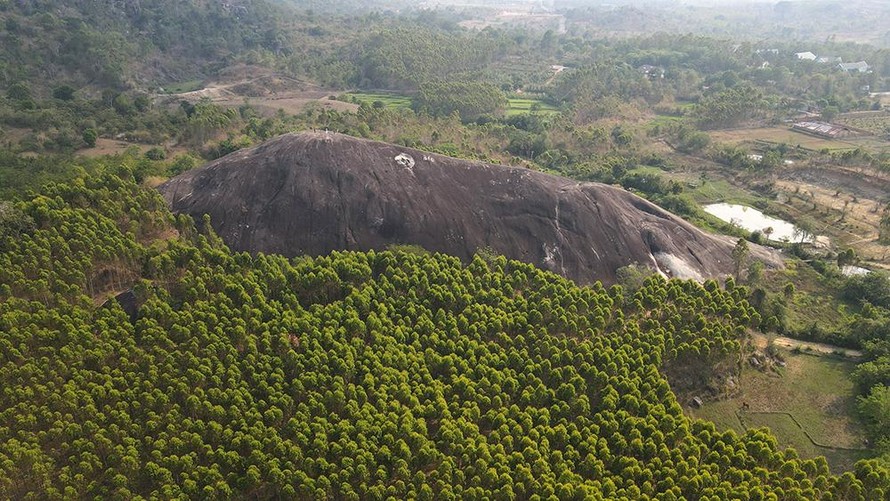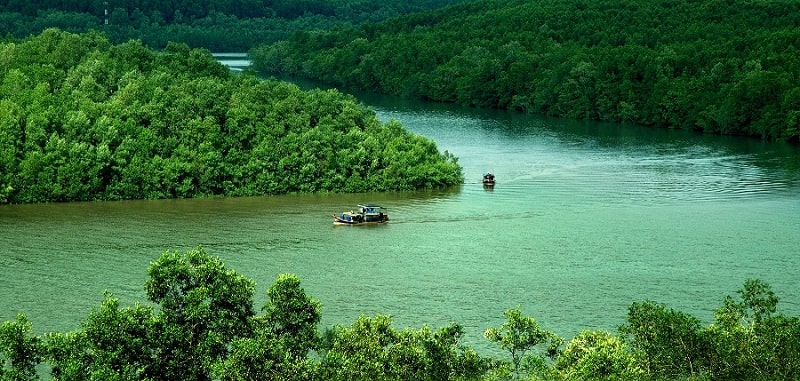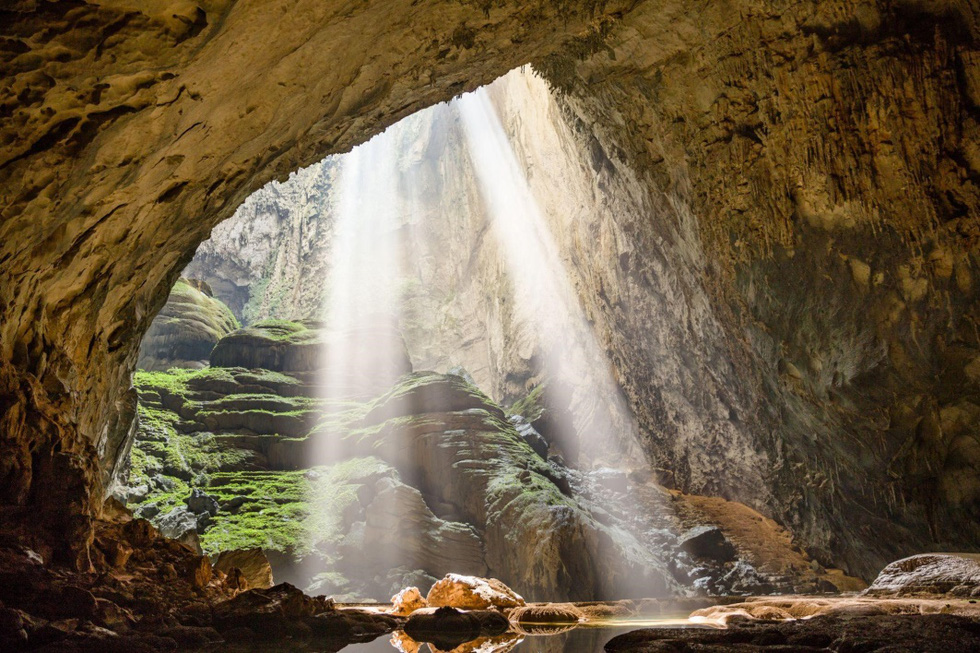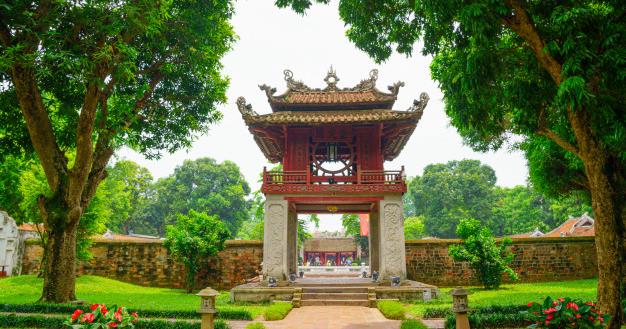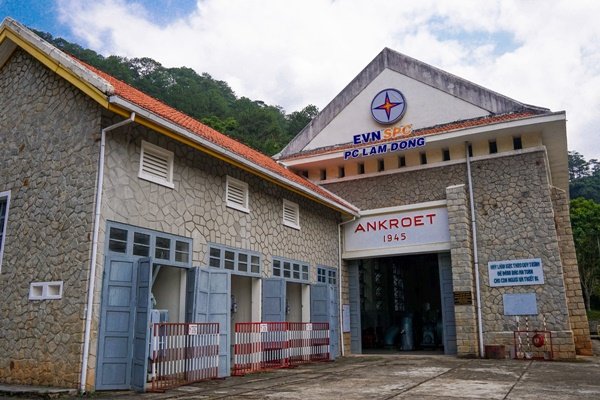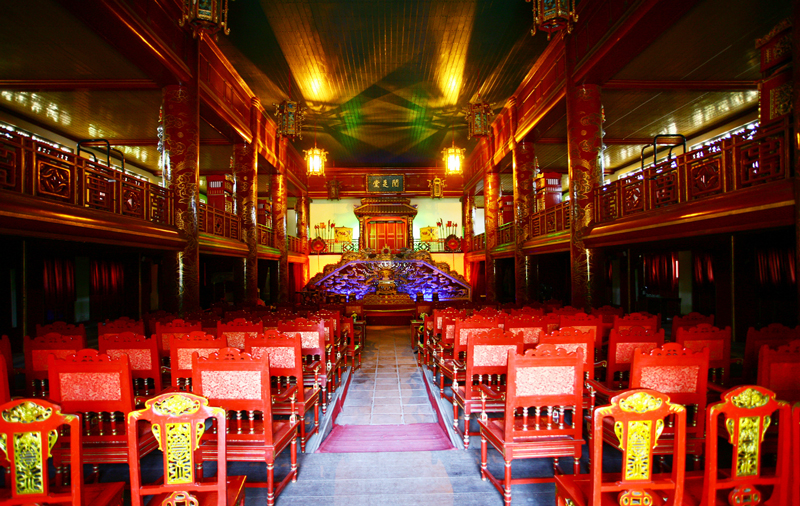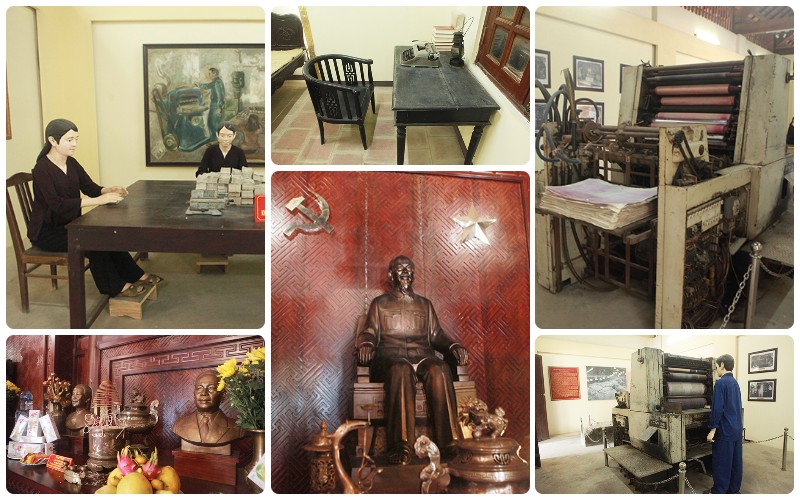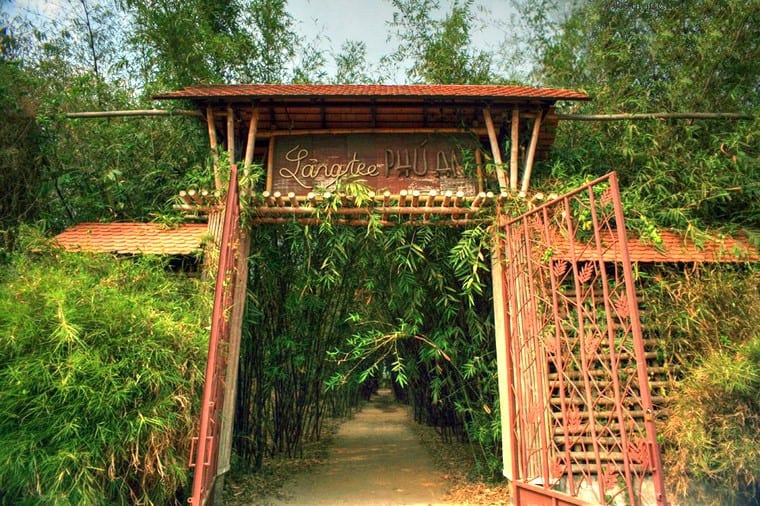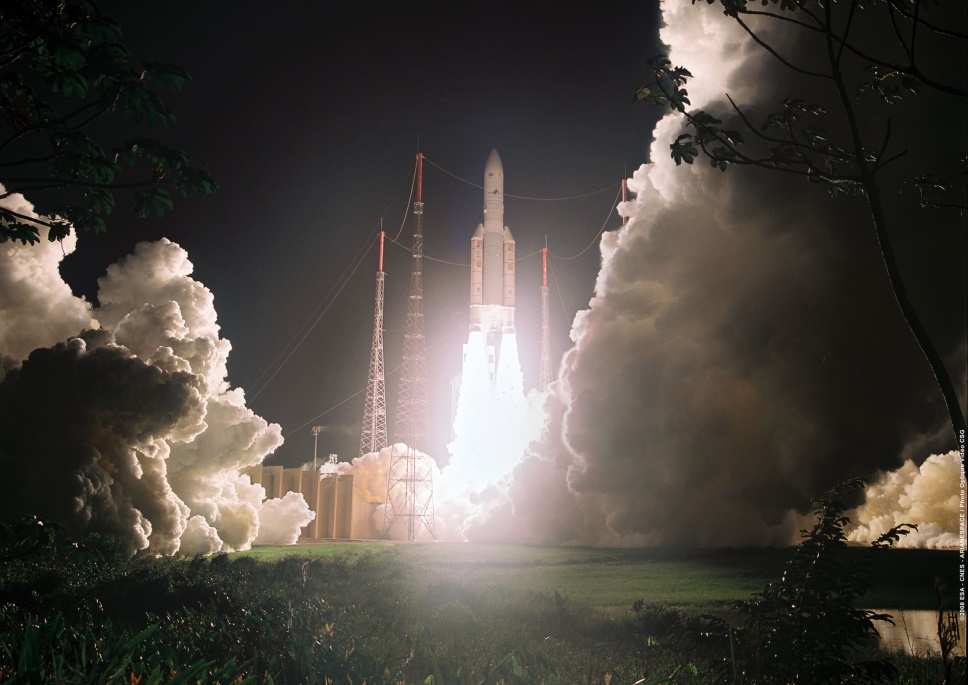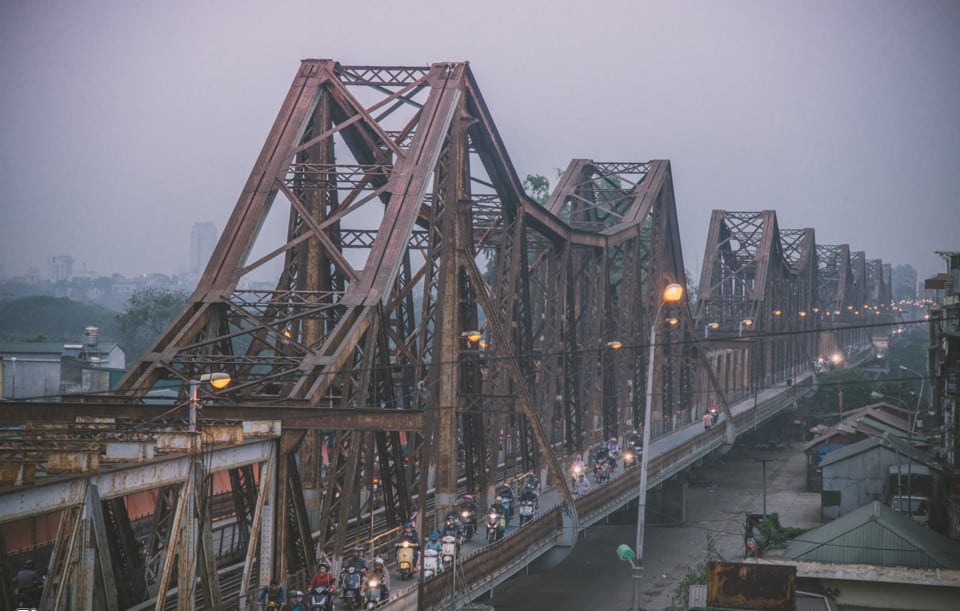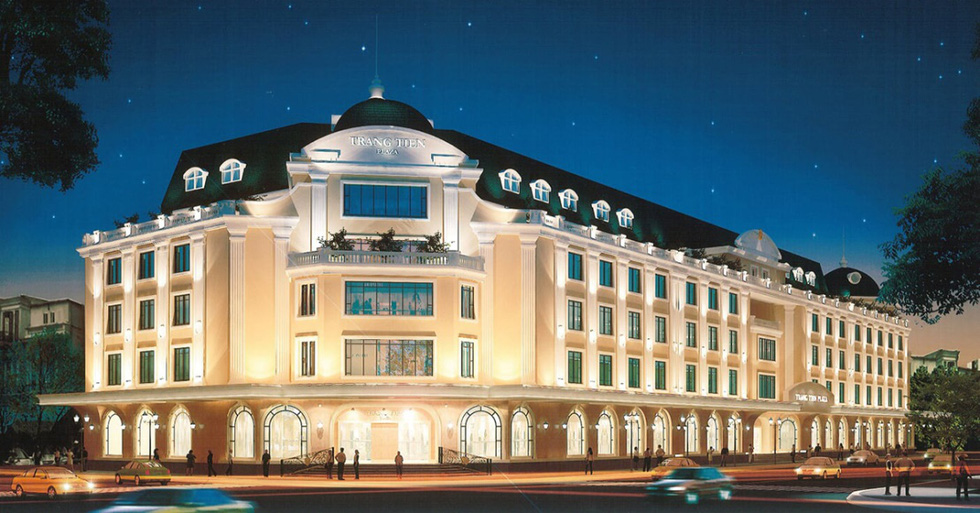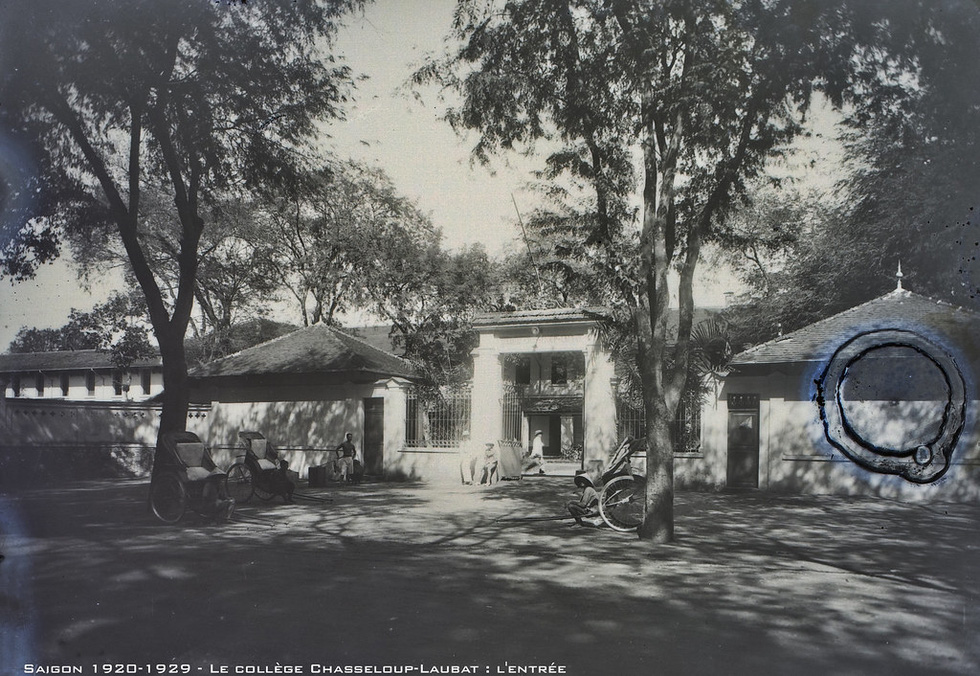Vietnamese record organization VietKings on Tuesday published the first 20 records on its inaugural list of Vietnam’s top 100 immutable records.
The immutable records, according to VietKings, are phenomena, objects, constructions, works, and events that appear or exist in Vietnam and are nearly irreplaceable or have extremely little potential to be damaged in the future.
The first 20 records include two groups of natural and manmade records.
Things that meet the criteria needed to make the list are inclined toward natural, unique, or nearly sustainable factors, such as the longest river, tallest mountain, or longest mountain range.
They also consist of outstanding structures that first appeared in the country, such as the first university, first hotel, first bridge, and first factory.
Vietnam's top 100 immutable records are expected to be formally recognized for the first time ever at the 55th Meet-up of Vietnamese Record Holders in early 2023.
Here are the top ten natural immutable records:
1. Fansipan Mountain, Lao Cai Province: The highest peak in Vietnam
|
|
| The top of Fansipan Mountain in the northern Vietnamese province of Lao Cai – the highest peak in Indochina at 3,143 meters. Photo: Supplied |
2. Ba Be Lake, Bac Kan Province: The largest natural freshwater lake in Vietnam
|
|
| Ba Be Lake has a surface area of 650 hectares, a length of eight kilometers, and a depth of 20-25 meters. It sits at an altitude of 145 meters above sea level. Ba Be Lake is one of the 100 largest natural freshwater lakes in the world and Vietnam's largest freshwater lake. Photo: Nam Tran / Tuoi Tre |
3. Phu Quoc Island, Kien Giang Province: The largest island and the first island city in Vietnam
|
|
| Phu Quoc is the largest island in Vietnam and dubbed the country's 'pearl island' thanks to its pristine beauty. It was recognized as the country’s first island city on January 1, 2021. Photo: Supplied |
4. Dong Nai River: The longest inland river in Vietnam
|
|
| Dong Nai River is Vietnam's longest inland river and, in terms of basin, the second-largest in the Mekong Delta region after the Mekong River. It flows 586 kilometers through the provinces of Lam Dong, Dak Nong, Binh Phuoc, Dong Nai, Binh Duong, and Ho Chi Minh City. Photo: Supplied |
5. O Quy Ho Pass, Lai Chau Province: The longest mountain pass in Vietnam
|
|
| Connecting the provinces of Lao Cai and Lai Chau, the 50-kilometer-long O Quy Ho Pass is the longest of its kind in Vietnam. Its roadway is both rugged and majestic. Photo: Supplied |
6. Truong Son Mountain Range: The longest mountain range in Vietnam
|
|
| With a total size of over 22 million hectares, the Truong Son mountain range spans a distance of more than 1,100 kilometers. Considered the ‘backbone’ of Vietnam, it runs through 21 provinces and cities from north to south, separated by the Hai Van Pass and Bach Ma Mountain in the central region. Photo: Supplied |
7. Tu San Canyon, Ha Giang Province: The deepest canyon in Vietnam
|
|
| Tu San Canyon, a deep abyss with cliffs towering 700-900 meters above the ground and stretching up to 1.7 kilometers in Pai Lung, Pa Vi, and Xin Cai Communes, Meo Vac District, Ha Giang Province, northern Vietnam. Photo: Supplied |
8. Da Voi Me (Mother Elephant Rock), Dak Lak Province: The largest granite monolith in Vietnam
|
|
| 'Da Voi Me' (Mother Elephant Rock) is around 30 meters high and about 200 meters long. The circumference at the base of the rock measures about 500. Located in Yang Reh Commune, Krong Bong District, Dak Lak Province, it is the largest monolith in Vietnam. Photo: Supplied |
9. Ca Mau mangrove forest, Ca Mau Province: The largest mangrove forest in Vietnam
|
|
| Ca Mau mangrove forest covers 63,017 hectares and spans six different districts: Dam Doi, Phu Tan, Tran Van Thoi, U Minh, Ngoc Hien, and Nam Can. More than 15,000 hectares of the region are in Ca Mau Cape National Park, the majority included in the Ca Mau Cape World Biosphere Reserve. Photo: Supplied |
10. Son Doong Cave, Quang Binh Province: The largest natural cave in Vietnam
|
|
| Son Doong Cave in Quang Binh Province is recognized as the world’s largest single cave passage by the Guiness World Records in 2009. Son Doong was discovered in 1990 in Phong Nha-Ke Bang National Park. Photo: Supplied |
Below are the top ten overall immutable records in Vietnam:
1. Temple of Literature, Hanoi: The first university in Vietnam
|
|
| Quoc Tu Giam (Imperial Academy) was built in 1076 by Emperor Ly Thanh Tong as a school for mandarins’ children. The academy was located next to Van Mieu (Temple of Literature), which was built six years earlier, all forming Vietnam’s first university Van Mieu – Quoc Tu Giam. Photo: Supplied |
2. Ankroet Hydropower Plant, Lam Dong Province: The first hydropower plant in Vietnam
|
|
| The construction of the Ankroet Hydropower Plant began in 1942 and was completed in 1945. Designed by the French, this hydroelectric plant is located in Lam Dong Province in the Central Highlands. The plant's units have been rebuilt while their capacity has been doubled. They continue to generate and deliver power to Da Lat. Ankroet is the country's first hydroelectric plant. Photo: Supplied |
3. 'Dang doi thang cao' (The Fox Gets What He Deserves): Vietnam's first animated film
|
|
| ‘Dang doi thang cao’ (The Fox Gets What He Deserves) is a 10-minute-long animated film that was produced by a group of Vietnamese artists in 1959. The film focuses on the friendship between the two main characters, Gau (Bear) and Ga (Chicken). Photo: Supplied |
4. Duyet Thi Duong Theater, Thua Thien-Hue Province: the first national theater in Vietnam
|
|
| Duyet Thi Duong Theater is a royal theater in Tu Cam Thanh (Forbidden Citadel), Hue Citadel, Thua Thien-Hue Province. It was built in 1826 during the reign of Vietnamese Emperor Minh Mang and is the oldest theater in Vietnam to this day. Photo: Supplied |
5. Chi Ne mint, Hoa Binh Province: The first mint in Vietnam
|
|
| Chi Ne plantation, located in Hoa Binh Province, was established at the end of the 19th century and covers an area of 7,331 hectares. The plantation owner was a Frenchman who sold it to a Vietnamese, Do Dinh Thien, in 1943. Thien later gave the plantation to the Vietnamese government in order to establish a mint. Photo: Supplied |
6. Phu An bamboo village, Binh Duong Province: The first bamboo ecological museum and botanical reserve in Vietnam
|
|
| Built in 1999, Phu An Ecological Museum and Botanical Reserve is the place where over 300 specimens of bamboo are maintained and cultivated. This is the very first bamboo conservation area in Vietnam and Southeast Asia. Photo: Supplied |
7. Vinasat-1: Vietnam’s first geostationary communications satellite
|
|
| Vinasat-1 is a geostationary satellite project implemented at an estimated cost of US$300 million. The satellite was successfully launched on April 19, 2008, with a 15-year operation period. Photo: Supplied |
8. Long Bien Bridge, Hanoi: The first steel bridge in Vietnam
|
|
| Long Bien Bridge, constructed by a French architect on September 12, 1898, was the first crossing bridge built across the Red River. The bridge was inaugurated on February 28, 1902 and measures 1,862 meters in length. Photo: Supplied |
9. Trang Tien Plaza, Hanoi: The first shopping mall in Vietnam
|
|
| Maison Godard (or Grands Magasins Réunis), built in 1901, has become a historical symbol of Hanoi. It is now known as Trang Tien Plaza. Photo: Supplied |
10. Le Quy Don High School, Ho Chi Minh City: The first high school in Vietnam
|
|
| Construction of Le Quy Don High School began in 1874 and finished in 1877. The original name of the school was Collège Indigène, but it was later changed to Collège Chasseloup Laubat. In 1954, the school's name was changed to Jean Jacques Rousseau. The school was renamed Le Quy Don High School in 1977 after being returned to the Vietnamese government in 1970. Photo: Supplied |
Like us on Facebook or follow us on Twitter to get the latest news about Vietnam!




